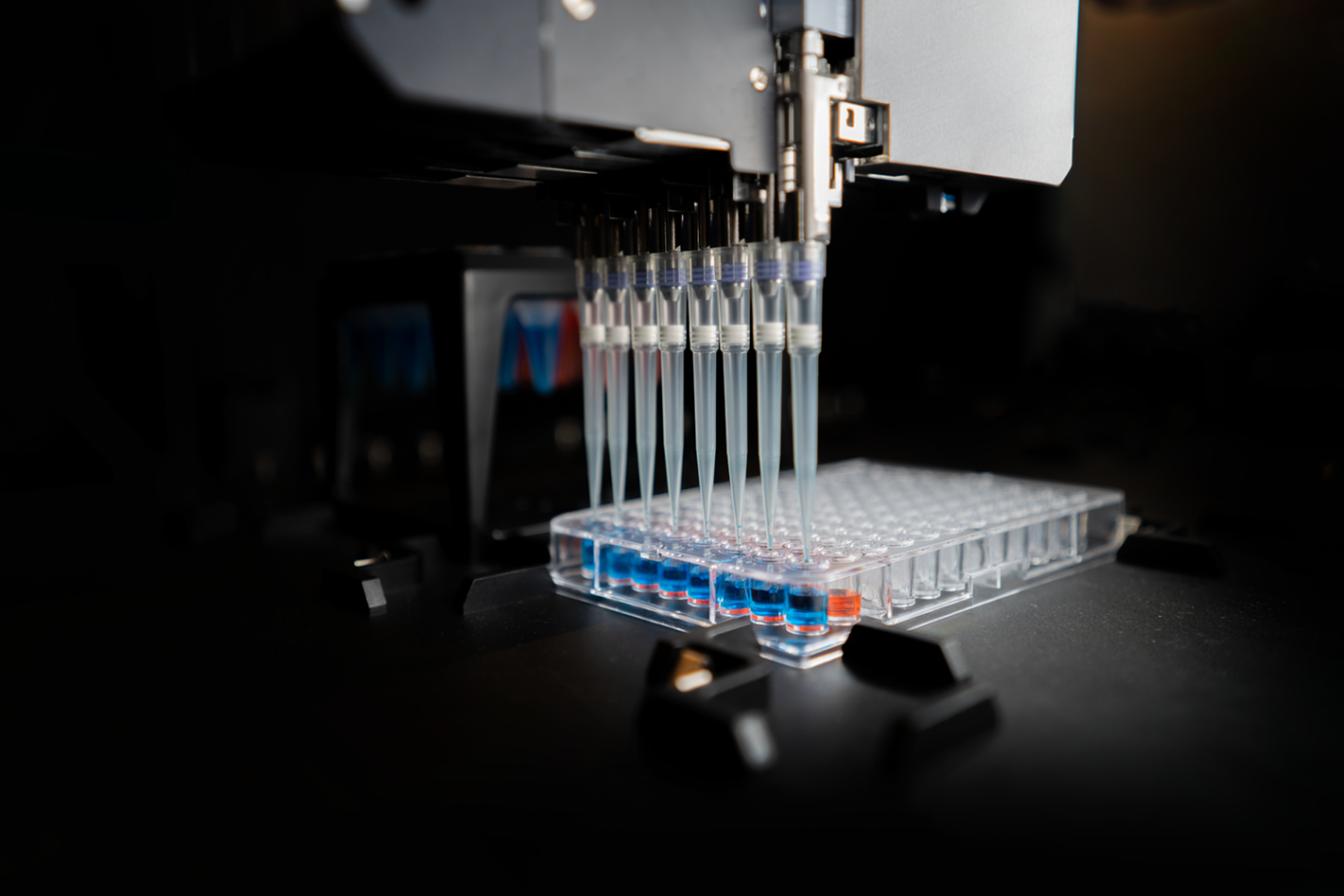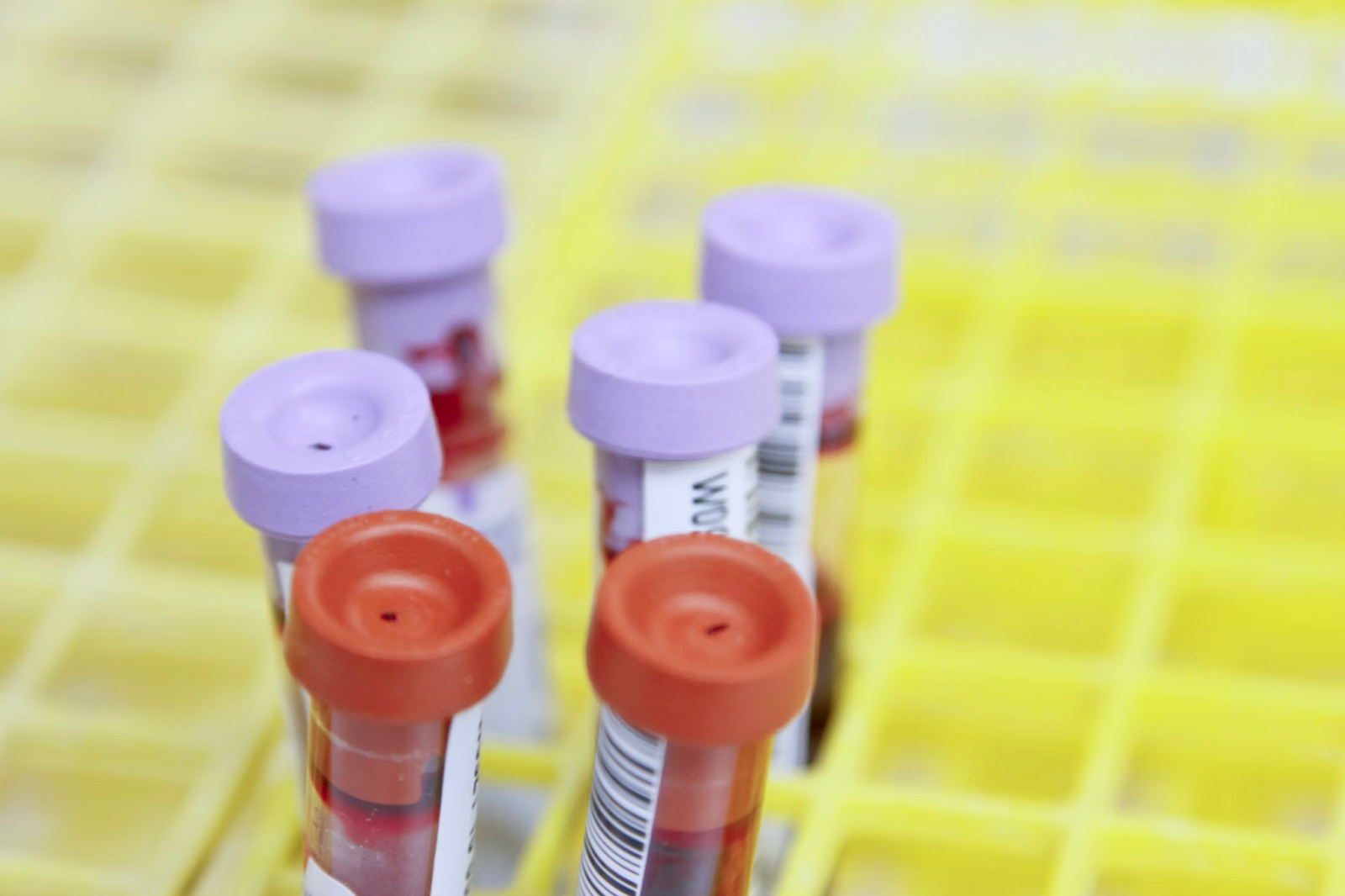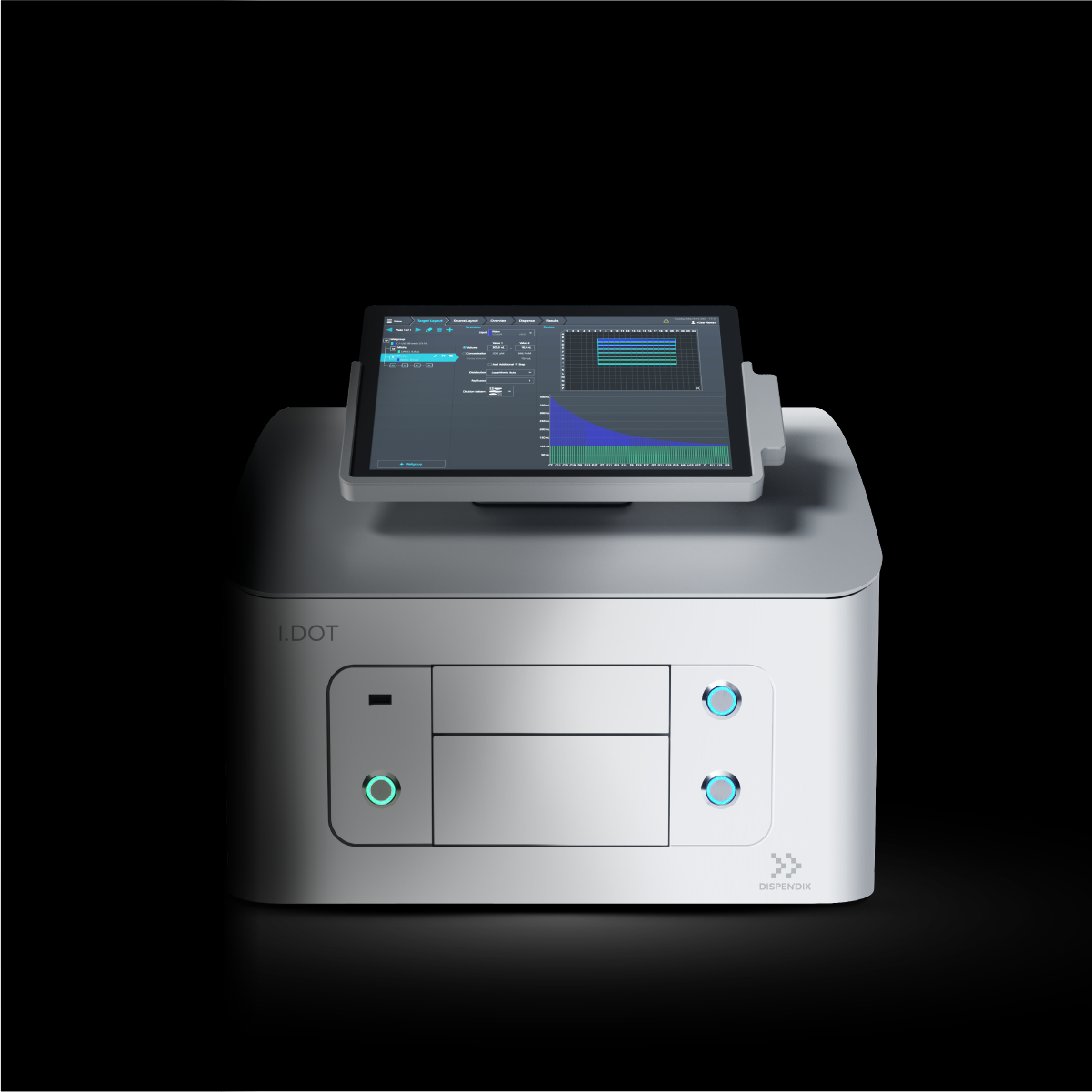Over the past few years, we have seen more and more labs begin to adopt robotic pipetting systems and integrate them into their workflows1. This has provided scientists with several benefits over manual pipetting, including enhanced accuracy and precision and the capacity to perform workflows with higher throughput2. Additionally, robotic pipetting setups improve laboratory safety by minimizing exposure to hazardous substances and reducing the risk of typical lab injuries such as repetitive strain injury (RSI). Advanced cloud-based solutions have recently emerged as innovative tools for full workflow integration, further enhancing productivity and data integrity. Here, we will explore the impact of robotic pipetting on lab practices and provide insights into some key considerations to help you choose the right semi-automated pipetting system for your lab.
The Impact of Robotic Pipetting
Transforming Accuracy and Precision
It’s no secret that with manual pipetting comes inherent human error, which can compromise the quality and integrity of resulting data3. Robotic pipetting systems curb this, enabling scientists to perform experiments with a far higher degree of accuracy and precision than manual systems. Automated pipetting systems measure volumes and dispense liquids far more accurately than manual pipettes. For example, DISPENDIX’s I.DOT Liquid Handler facilitates precise transfers down to 8 nL, while manual pipettes are prone to a high degree of error when pipetting volumes lower than 0.5-1 µL3. Robotic pipetting systems are often equipped with advanced features like automated liquid class calibration and volume verification, ensuring accuracy and precision across various liquids despite their inherent variability. This high level of precision is crucial in sensitive workflows, such as omics research, where even slight pipetting variations can significantly affect outcomes, making robotic pipetting an invaluable tool for achieving reliable, reproducible results4,5.
Boosting Efficiency and Throughput
One of the most significant features of robotic pipetting systems is their ability to automate repetitive, monotonous tasks. This not only avoids the introduction of error but also frees up researchers for more strategic work that requires their high lab skill levels and scientific expertise. In addition, robotic pipetting setups provide researchers with the capacity for parallel processing, whereby they can handle multiple samples simultaneously, increasing throughput and allowing researchers to scale up assays. This is particularly advantageous in high-throughput screening (HTS), for example, when screening compound libraries in drug discovery (Fig. 1)6,7.

Figure 1. Robotic pipetting systems, like DISPENDIX's G.STATION NGS Workstation, are particularly useful for parallel processing in HTS setups.
Enhancing Safety and Ergonomics
Repetitive manual pipetting goes hand in hand with the serious risk of RSI, which can be painful and uncomfortable, halting researcher productivity and detrimentally impacting other areas of their lives. Robotic pipetting systems can eliminate this risk by curbing the need for manual intervention. Moreover, automated workflows are advantageous for labs working with hazardous substances, such as toxins and pathogens, since they limit the exposure of lab personnel to these substances (Fig. 2). A study shed light on the benefits of a semi-automated workflow for tuberculosis testing, showcasing its ability to minimize manual sample handling and hands-on time, lowering the risk of exposure to potentially hazardous tuberculous samples and diminishing the chances of RSI8. These findings highlight the significant advantages of integrating semi-automated processes in medical testing environments, offering a safer and more efficient pathway for handling infectious samples and enhancing laboratory safety.

Figure 2. Robotic pipetting systems are advantageous for minimizing human exposure to potentially hazardous substances in the lab. (Source)
Data Integration and Connectivity
Recently, advancements in automated and semi-automated lab appliances have opened up the possibility of fully integrated, intelligent, automated workflows. These systems facilitate seamless data exchange and coordinated pipelines, drastically improving efficiency and reducing the potential for error. Furthermore, innovative cloud-based solutions for integrating automated systems have changed how scientists monitor and control their experiments, allowing for real-time adjustments and oversight from anywhere in the world. For example, the G.STATION’s DISPENDIX Cloud Platform enables scientists to monitor the status of their experiments remotely, design protocols and processes, and share them, facilitating more collaborative research and diagnostic efforts.
Considerations for Choosing a Semi-Automated System
If you’re considering integrating a semi-automated robotic pipetting system into your lab, these key considerations can help you choose the right system:
- Workflow Needs and Budget: The key to choosing the right semi-automated pipetting system is aligning your lab's workflow needs with the capabilities of available systems. Assess the requirements and throughput of your experiments alongside your budget to ensure you select a system that meets your lab's specific demands while remaining within budget.
- Ease of Use and Training: Successfully integrating a robotic pipetting system into your lab depends on the system’s user-friendliness balanced with your lab's experience. Systems with intuitive interfaces and minimal training needs enhance efficiency, particularly in labs with limited automation experience, as they significantly reduce the time each user spends on training before operation.
- Scalability and Integration: As your research progresses, your lab's needs will change. It's essential to select a pipetting system that not only meets the lab’s current needs but can also adapt to future demands. This may mean choosing a system capable of managing heavier workloads or one that can be integrated with other lab equipment, providing a future-proof solution that evolves with your research.
Conclusion
Robotic pipetting has revolutionized lab practices by offering unmatched precision, efficiency, and safety. The recent rise of cloud-based platforms further enhances workflow automation and connectivity. Ultimately, robotic pipetting plays an essential role in driving scientific progress and innovation, and more and more labs are beginning to integrate automation into their workflows.

Are you ready to experience robotic pipetting like never before? Schedule a personalized consultation with one of our experts to discuss how the I.DOT Liquid Handler can revolutionize your specific lab needs.
References
- Holland I, Davies JA. Automation in the Life Science Research Laboratory. Front Bioeng Biotechnol. 2020;8:571777. doi:10.3389/fbioe.2020.571777
- Torres-Acosta MA, Lye GJ, Dikicioglu D. Automated liquid-handling operations for robust, resilient, and efficient bio-based laboratory practices. Biochem Eng J. 2022;188:108713. doi:10.1016/j.bej.2022.108713
- Guan XL, Chang DPS, Mok ZX, Lee B. Assessing variations in manual pipetting: An under-investigated requirement of good laboratory practice. J Mass Spectrom Adv Clin Lab. 2023;30:25-29. doi:10.1016/j.jmsacl.2023.09.001
- Tegally H, San JE, Giandhari J, De Oliveira T. Unlocking the efficiency of genomics laboratories with robotic liquid-handling. BMC Genomics. 2020;21(1):729. doi:10.1186/s12864-020-07137-1
- Socea JN, Stone VN, Qian X, Gibbs PL, Levinson KJ. Implementing laboratory automation for next-generation sequencing: benefits and challenges for library preparation. Front Public Health. 2023;11:1195581. doi:10.3389/fpubh.2023.1195581
- Schneider G. Automating drug discovery. Nat Rev Drug Discov. 2018;17(2):97-113. doi:10.1038/nrd.2017.232
- Roy A. High-Throughput Screening (HTS) Technology. In: Offermanns S, Rosenthal W, eds. Encyclopedia of Molecular Pharmacology. Springer International Publishing; 2021:787-799. doi:10.1007/978-3-030-57401-7_73
- Miller KWP, Grossman N, Haviernik P, et al. A Semi-Automated Tuberculosis Testing Workflow Reduces Manual Hazardous Sample Handling and Hands-On Time: A Proof-of-Concept Study. SLAS Technol. 2020;25(3):253-257. doi:10.1177/2472630319884519